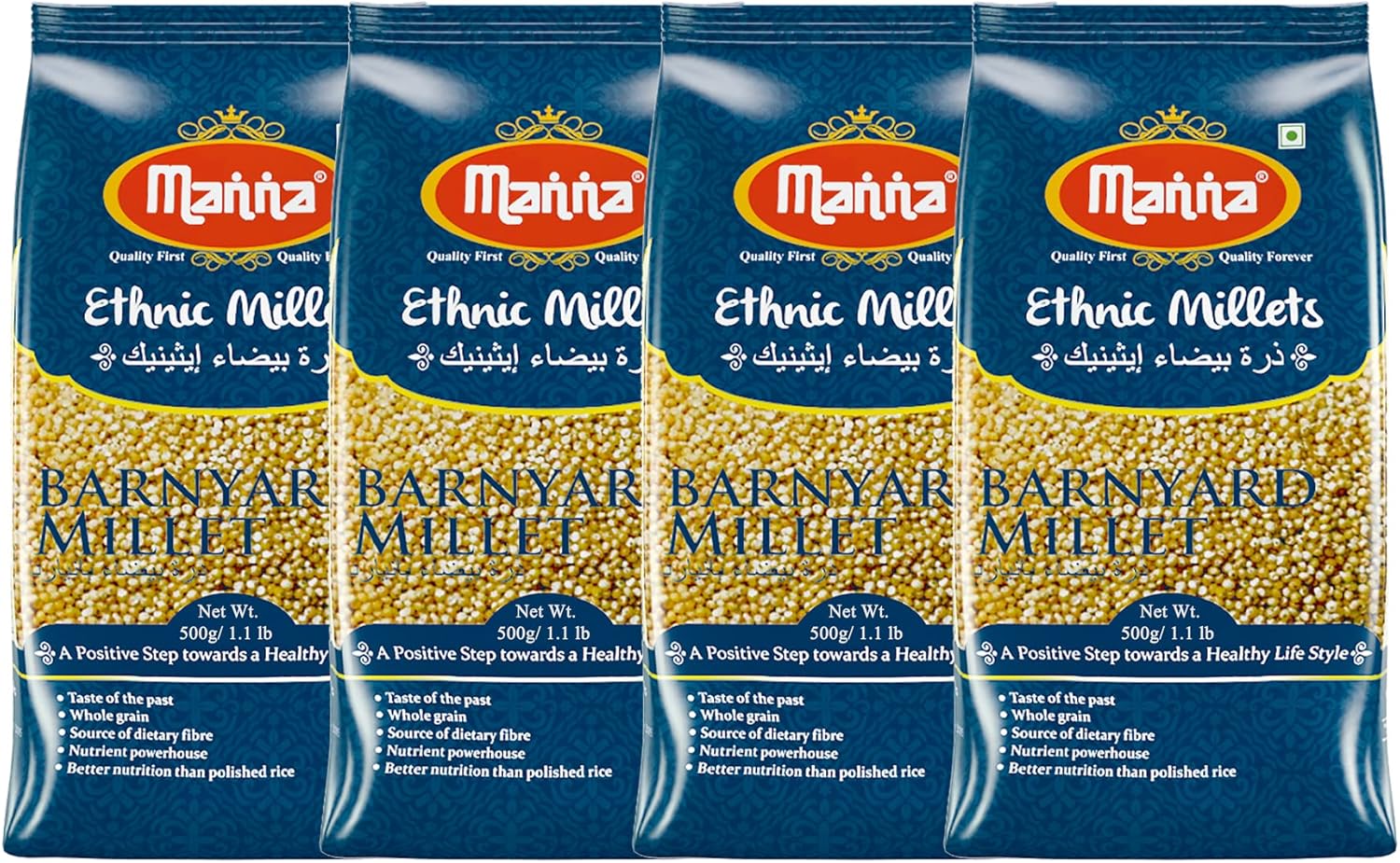About this deal
Ajaib M., Khan K. M., Perveen S., Shah S. (2013). Antimicrobial and antioxidant activities of Echinochloa colona (Linn.) link and Sporobolus coromandelianus (Retz.) kunth. J. Chem. Soc. Pakistan. 35 1384–1398. Grain Allergy, Spelt, Millet, Wheat, Lentil, Barley, Cereals. American Academy of Allergy, Asthma & Immunology. Joshi RP, Jain AK, Chauhan SS, Singh G (2015) Characterization of barnyard millet ( Echinochloa frumentacea (Roxb.) Link.) landraces for agro-morphological traits and disease resistance. Electron J Plant Breed 6:888–898
Vigueira, C C; Olsen, K M; Caicedo, A L (2012-11-28). "The red queen in the corn: agricultural weeds as models of rapid adaptive evolution". Heredity. Nature. 110 (4): 303–311. doi: 10.1038/hdy.2012.104. ISSN 0018-067X. PMC 3607111. PMID 23188175.Reddy IBL, Reddy DS, Narasu ML, Sivaramakrishnan S (2011) Characterization of disease resistance gene homologues isolated from finger millet (Eleusinecoracana L. Gaertn). Mol Breed 27:315–328. https://doi.org/10.1007/s11032-010-9433-1 Millet porridge is a traditional food in Russian, German, and Chinese сuisines. In Russia, it is eaten sweet (with milk and sugar added at the end of the cooking process) or savoury with meat or vegetable stews. In China, it is eaten without milk or sugar, frequently with beans, sweet potato, and/or various types of squash. In Germany, it is also eaten sweet, boiled in water with apples added during the boiling process and honey added during the cooling process. Anju T., Sarita S. (2010). Suitability of foxtail millet (Setaria italica) and barnyard millet (Echinochloa frumentacea) for development of low glycemic index biscuits. Malays. J. Nutr. 16 361–368. Finger millet is originally native to the highlands of East Africa and was domesticated before the third millennium BCE. Its cultivation had spread to South India by 1800 BCE. [26] Spreading [ edit ] Millets are very nutritious, and they are a good source of micronutrients, minerals, protein, and fiber. It’s a good replacement for rice, and you can serve it along with curries or use them in salads, soups, and stews. Instant Pot Barnyard Millet
Barnyard millet (Echinochloa frumentacaea) is one of the hardiest millets, which is called by several names viz., Japanese barnyard millet, ooda, oadalu, sawan, sanwa, and sanwank. Nutritionally, Barnyard millet is an important crop. It is a fair source of protein, which is highly digestible and is an excellent source of dietary fibre with good amounts of soluble and insoluble fractions (Hadimani and Malleshi 1993; Veena et al. 2005). The carbohydrate content is low and slowly digestible (Veena et al. 2005), which makes the Barnyard millet a natural designer food. In the present days of increased diabetes mellitus, barnyard millet could become an ideal food. Yang J, Wang HP, Zhou L, Xu CF. Effect of dietary fiber on constipation: a meta analysis. World J Gastroenterol. 2012;18(48):7378-7383. doi:10.3748/wjg.v18.i48.7378 Millets ( / ˈ m ɪ l ɪ t s/) [1] are a highly varied group of small-seeded grasses, widely grown around the world as cereal crops or grains for fodder and human food. Most species generally referred to as millets belong to the tribe Paniceae, but some millets also belong to various other taxa. [ citation needed]Some of the species within this genus are millets that are grown as cereal or fodder crops. The most notable of these are Japanese millet ( E. esculenta) in East Asia, Indian barnyard millet ( E. frumentacea) in South Asia, and burgu millet ( E. stagnina) in West Africa. Collectively, the members of this genus are called barnyard grasses (though this may also refer to E. crus-galli specifically), and are also known as barnyard millets or billion-dollar grasses. Pearl millet is one of the two major crops in the semiarid, impoverished, less fertile agriculture regions of Africa and southeast Asia. [37] Millets are not only adapted to poor, dry infertile soils, but they are also more reliable under these conditions than most other grain crops. This has, in part, made millet production popular, particularly in countries surrounding the Sahara in western Africa. [ citation needed] Echinochloa frumentacea ( Indian barnyard millet, sawa millet, or billion dollar grass) [2] is a species of Echinochloa. Both Echinochloa frumentacea and E. esculenta are called Japanese millet. This millet is widely grown as a cereal in India, Pakistan, and Nepal. Its wild ancestor is the tropical grass Echinochloa colona, [3] but the exact date or region of domestication is uncertain. It is cultivated on marginal lands where rice and other crops will not grow well. The grains are cooked in water, like rice, or boiled with milk and sugar. Sometimes it is fermented to make beer. While also being part of staple diet for some communities in India, these seeds are, in particular, (cooked and) eaten during religious fasting (willingly abstaining from some types of food / food ingredients). For this reason, these seeds are commonly also referred to as " vrat ke chawal" in Hindi (i.e., "rice for fasting", literally). Other common names to identify these seeds include oodalu ( ಊದಲು) in Kannada, Shyamak ( শ্যামাক) or Shyama Chal ( শ্যামা চাল) in Bangla, jhangora in the Garhwal Hills, bhagar ( भगर) in Marathi-speaking areas, samo or morio ( mario, moraiaya) seeds in Gujarati, or kuthiraivaali ( குதிரைவாளி) in Tamil. Dida MM, Wanyera N, Dunn MLH, Bennetzen JL, Devos KM (2008) Population structure and diversity in finger millet ( Eleusine coracana) germplasm. Trop Plant Biol 1:131–141. https://doi.org/10.1007/s12042-008-9012-3
 Great Deal
Great Deal 